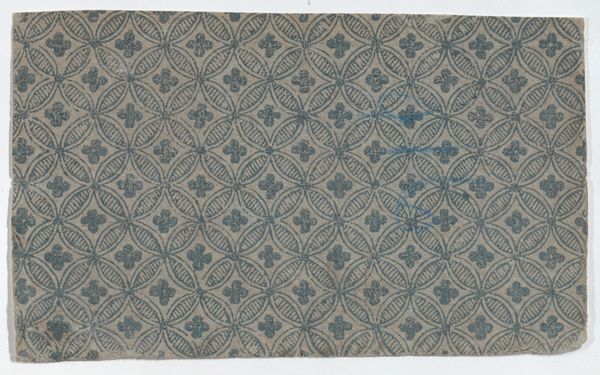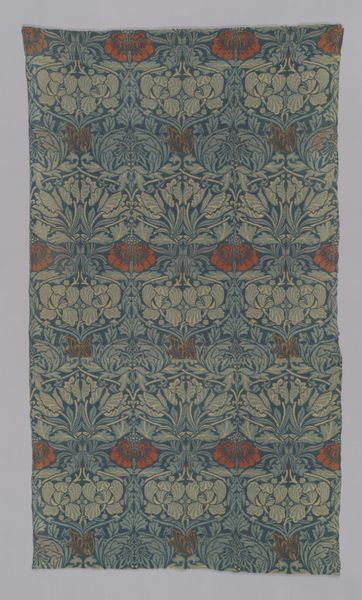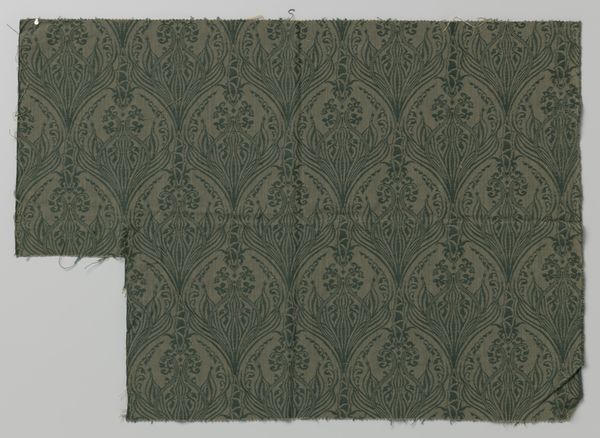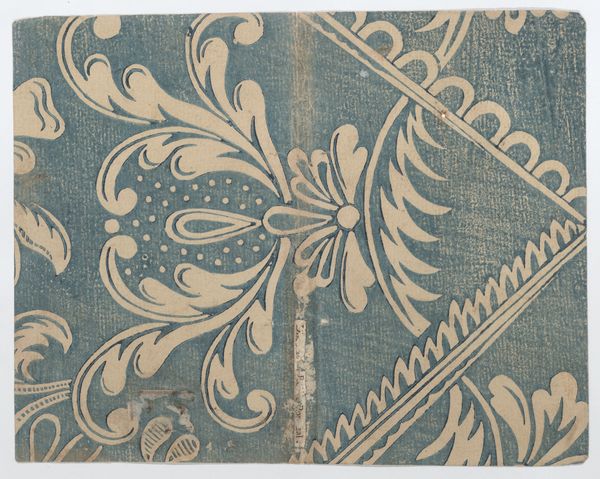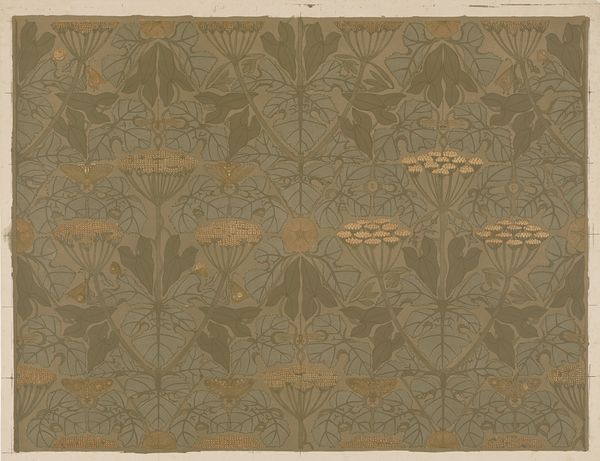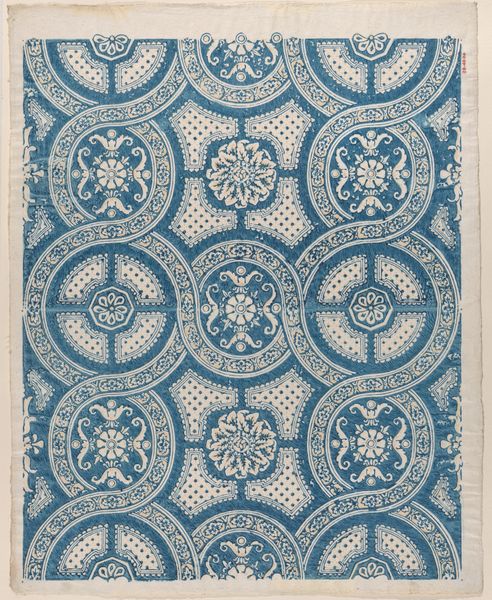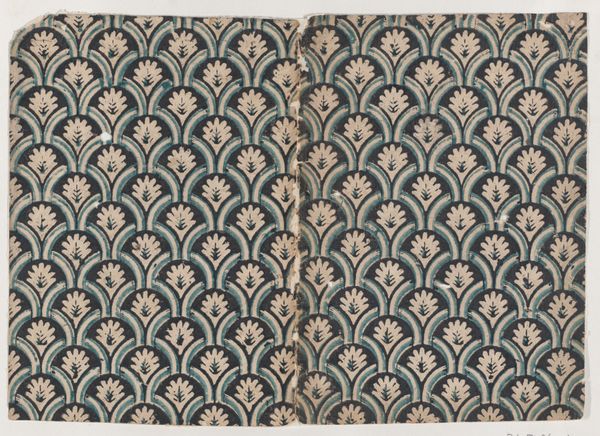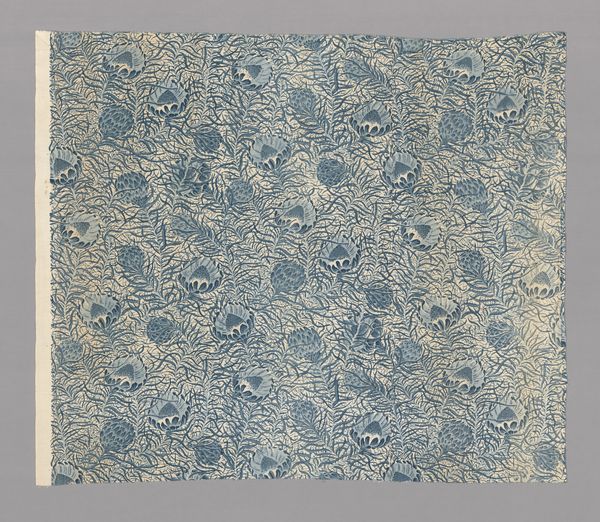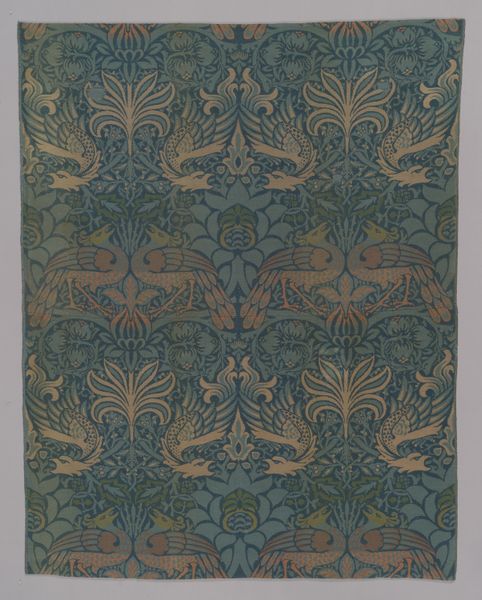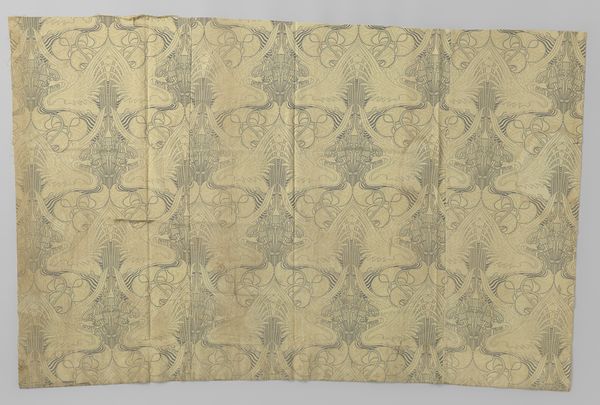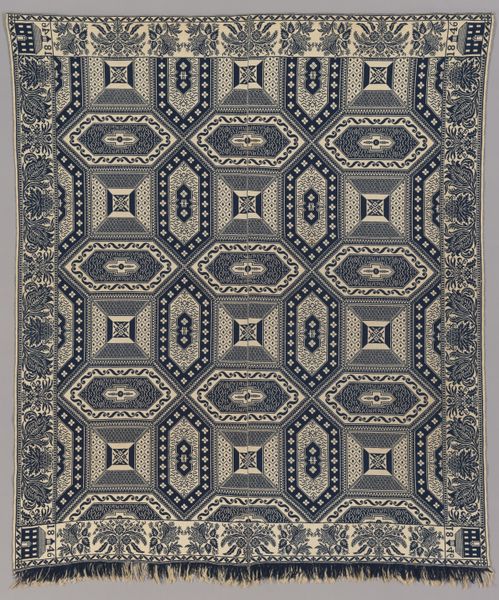
Bespanningsstof met patroon van schermbloem en vlinders binnen spitsovalen. 1909 - 1924
0:00
0:00
theonieuwenhuis
Rijksmuseum
fibre-art, textile
#
natural stone pattern
#
fibre-art
#
art-nouveau
#
textile
#
geometric pattern
#
repetitive shape and pattern
#
repetition of pattern
#
regular pattern
#
pattern repetition
#
textile design
#
decorative-art
#
imprinted textile
#
layered pattern
#
combined pattern
Dimensions: length 38.0 cm, width 46.5 cm
Copyright: Rijks Museum: Open Domain
Curator: Before us, we have "Bespanningsstof met patroon van schermbloem en vlinders binnen spitsovalen" – a textile by Theo Nieuwenhuis, created sometime between 1909 and 1924. Editor: My immediate impression is of cool restraint. The blue-grey palette gives the piece a calm, almost subdued elegance despite its intricacy. Curator: Indeed. Note how the artist utilizes pointed ovals to contain umbelliferous flowers and butterflies, establishing a compelling geometric rhythm. The composition balances naturalistic motifs with stylized abstraction. Editor: It's interesting to consider this textile as an object of labor. Nieuwenhuis's design would have necessitated considerable technical skill in the weaving or printing process. The creation of the dyes, the preparation of the fabric… it speaks to the complex systems that support decorative arts. Curator: Precisely. The strategic deployment of these botanical and zoomorphic forms also invites semiotic analysis. What statements are being made through these visual signifiers? Editor: Perhaps a statement of control, or of framing nature to domesticate it. The repeating shapes act like a mold imposing order on organic, potentially chaotic forms. But it could also just represent commercial priorities and accessibility – a ready-made pattern intended for middle-class households, with less concern for challenging high art boundaries. Curator: It would be intriguing to examine the social climate of its creation to further appreciate the intent. I would wager a thorough consideration of contemporary critical discourse surrounding decorative art and its perceived hierarchy could provide new pathways to understanding the piece. Editor: Absolutely. The physical qualities matter too; understanding the weave structure, the type of dye, and the fiber content gives us an important material connection to the era and artistic purpose of this lovely patterned design. Curator: Considering the object through a multifaceted lens allows for enriched perception. It is satisfying when theory is grounded within palpable, material considerations. Editor: I agree. Studying the work provides so many threads with which we could unravel assumptions regarding production and art.
Comments
No comments
Be the first to comment and join the conversation on the ultimate creative platform.
